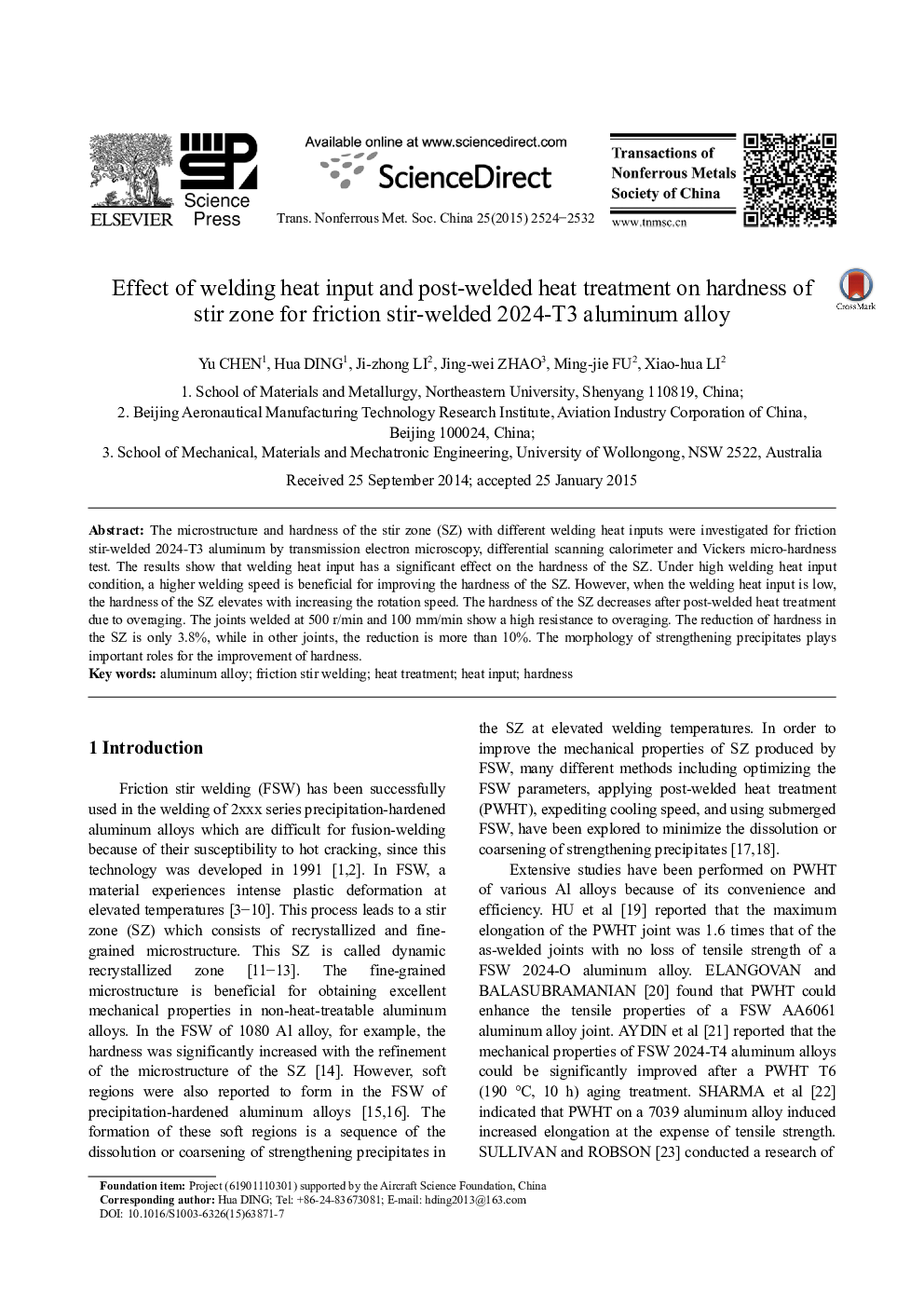| Article ID | Journal | Published Year | Pages | File Type |
|---|---|---|---|---|
| 1636695 | Transactions of Nonferrous Metals Society of China | 2015 | 9 Pages |
Abstract
The microstructure and hardness of the stir zone (SZ) with different welding heat inputs were investigated for friction stir-welded 2024-T3 aluminum by transmission electron microscopy, differential scanning calorimeter and Vickers micro-hardness test. The results show that welding heat input has a significant effect on the hardness of the SZ. Under high welding heat input condition, a higher welding speed is beneficial for improving the hardness of the SZ. However, when the welding heat input is low, the hardness of the SZ elevates with increasing the rotation speed. The hardness of the SZ decreases after post-welded heat treatment due to overaging. The joints welded at 500 r/min and 100 mm/min show a high resistance to overaging. The reduction of hardness in the SZ is only 3.8%, while in other joints, the reduction is more than 10%. The morphology of strengthening precipitates plays important roles for the improvement of hardness.
Related Topics
Physical Sciences and Engineering
Materials Science
Metals and Alloys
Authors
Yu CHEN, Hua DING, Ji-zhong LI, Jing-wei ZHAO, Ming-jie FU, Xiao-hua LI,
